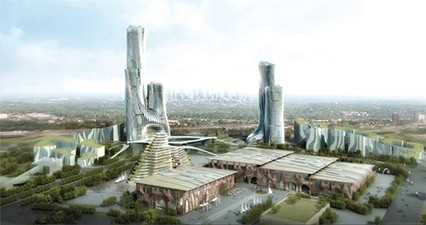
Developers of the R84 billion Chinese-funded 'smart city' initiative have moved to allay fears that the project is unlikely to have long-term benefits for the local job market and give assurances that skills will be transferred. Construction on the city, situated on Johannesburg's East Rand, is expected to start later this year, and the entire project is set to take between 15 and 20 years to complete.
This follows the November 2013 purchase of 1 600 hectares of land in the Modderfontein area by Chinese group Shanghai Zendai, for about R1.06 billion. The property previously belonged to listed chemicals group AECI, and the transaction is understood to be one of the largest single foreign direct investments in South Africa.
However, industry pundits have expressed scepticism about the long-term benefits of the project, with industry veteran Adrian Schofield being particularly concerned about the potential lack of skills transfer, based on the trend seen in previous local ICT projects.
Schofield notes that Chinese investment typically goes into Chinese companies, which bring their skills with them, and then take them home again. "The Chinese aren't known for investing out of the goodness of their hearts; they do so because it's good for them," says Schofield.
Significant benefits
IDC analyst Mark Walker agrees that skills transfer could prove to be a big challenge, as technology developments focus on automation and replication. "Many companies fly in personnel from overseas to get things running and after that, the main concern is maintenance and support of infrastructure. A lot of the time it can be done from anywhere in the world."
Chinese companies based in SA have in the past come under fire for bringing in foreign nationals to complete contracts, instead of transferring skills to local workers. The Congress of South African Trade Unions (Cosatu) has said local workers should be employed, and charged that Chinese companies are exploiting Chinese workers by paying them a lower wage.
However, Anthony Diepenbroek, CEO of Zendai Development SA - the local arm of Hong Kong-based Shanghai Zendai Investments - says the Modderfontein New City, as the development is known, will create a significant amount of jobs and contribute billions of rand to the economy during its construction phase.
According to an economic assessment done by the Bureau for Economic Research (BER) in March 2014, 'there may be significant economy-wide benefits stemming from the Modderfontein development'.
The BER assessment - based on the 15- year development period and data supplied by the developers - indicates an annual contribution to the economy of R13.5 billion and the creation of more than 21 000 jobs per year.
The Chinese aren't known for investing out of the goodness of their hearts; they do so because it's good for them.
ICT veteran Adrian Schofield
Diepenbroek claims the project will see some of the largest construction activity since the country hosted the Football World Cup in 2010. "The model is skewed towards partnerships with local developers and/or the on-selling of parcels of land to independent developers. We expect the project to create significant downstream opportunities for even students in artisans' institutes in the vicinity."
He adds skills and knowledge transfer is an imperative to a project of any size. "Given the footprint of Modderfontein New City, we trust we'll be able to run a robust knowledge transfer programme in project management and engineering, safety, sustainability, project controls and other specialties."
Connected city
Diepenbroek says fears that skills for the construction of the smart city would be resourced mainly from China, meaning the local labour force would not benefit, are unfounded.
"As an organisation, we will seek to attract and develop the right mix of skills to support the development. To ensure a flow of the right talent to grow the business over time, we'll be looking at hiring both locally and globally to build our talent pipeline.
"We want to make a direct and meaningful contribution to economic and social inclusion by employing local talent. If certain skills are unavailable in South Africa, we would look at the global skills pool. However, we will have a programme to ensure these skills are transferred to South Africans. As a business, we're committed to meeting the prescribed employment benchmarks."
Digitally-connected city
Diepenbroek adds that the 'smart' concept for Modderfontein New City would not merely be limited to the provision of ICT services, such as connectivity and fibre to the home.
"We envisage that once the new city begins to take shape, smart systems will not only provide world-class ICT infrastructure, but also enable efficient use of resources and provide services that are responsive to people's needs. The smart city elements will be all pervasive and not limited to ICT functions. They'll also cover energy, healthcare, water, waste and education."
He says the new development will embrace smart technology to aid in the administration of city services, as well as reduce congestion, pollution and energy consumption through sustainable development practices. "Modderfontein New City is expected to be the first smart city in the country with services and systems designed into the fabric of the built environment from the outset."
The development phase will be overseen by Zendai Development SA, which will ensure contracts awarded to suppliers - both local and international - follow due process and comply with regulatory and local government requirements.
Furthermore, Diepenbroek notes the technology components will also be sourced both locally and internationally. "The city will be rendered 'smart' through a collection of technologies cutting across many industries - transportation and traffic management, energy, telecoms and IT, electronics and surveillance, etc.
"To manage this torrent of information on a project this size, we'll have to rely on both local, as well as international suppliers. No one company can cover the entire industry chain," he concludes.
This article was first published in Brainstorm magazine. Click here to read the complete article at the Brainstorm website.
Share